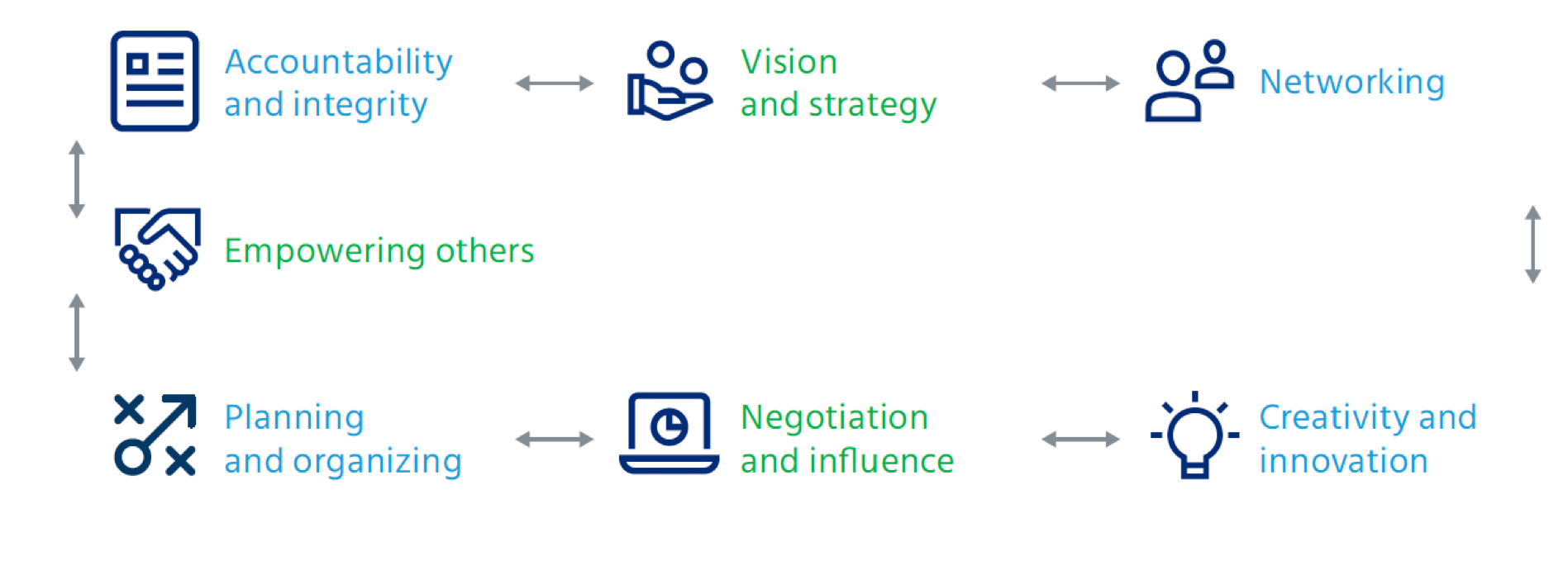Sample 360 Survey Questionnaire
We have enlisted a few sample questions below to help better understand what to ask in a 360 survey.
1. Sample survey statement:
Choose the option that best describes your opinion about the candidate’s innovative qualities.
(Candidate’s name) applies novel methods to improve work processes and enhance organizational capability.
a) Almost always
b) Frequently
c) Sometimes
d) Never
2. Sample survey statement:
Choose the option that best describes your opinion about the candidate’s conflict management ability. (Candidate’s name) listens to the team members in an unbiased manner while resolving conflicts.
a) Almost always
b) Frequently
c) Sometimes
d) Never
3. Sample survey statement:
Choose the option that best describes your opinion about the candidate’s ability to influence and negotiate. (Candidate’s name) effectively persuades others to take the desired action and reach win-win solutions for everyone involved.
a) Almost always
b) Frequently
c) Sometimes
d) Never
4. Sample survey statement:
Choose the option that best describes your opinion about the candidate’s learning agility. (Candidate’s name) is not bogged down by mistakes and failures and takes the same as a learning opportunity to improve oneself.
a) Almost always
b) Frequently
c) Sometimes
d) Never
360-Degree Survey Templates For Popular Job Roles
The evaluation parameters for employees at different levels will significantly overlap in some areas but vary considerably in others. Below are a few examples of 360 feedback survey templates detailing how the measured competencies vary according to the job role, level and industry.
360-Degree Survey Template For Project Managers
Project managers are responsible for delivering a project successfully and acting as leaders who plan, organize and lead the team to achieve desired results. Hence a 360 survey template for project managers should include an assessment of competencies that indicate dependability, maturity, dedication and domain expertise.
Competency framework for project managers

360-Degree Survey Template For sales Managers
Sales managers deal with retailers and distributors, run day-to-day operations for the sales team, generate revenue and maintain customer relationships in respective geographical areas. Therefore, they need to be business-savvy, effective communicators, emotionally intelligent and intensely customer-focused.
Competency framework for sales managers

360-Degree Survey Template For senior Managers
Senior managers plan, direct, coordinate and monitor the team’s progress. They maximize efficiency, productivity and performance by ensuring all operations run smoothly. Besides possessing strong leadership qualities, they also need to be creative and innovative.
Competency framework for senior managers

360-Degree Survey Template For IT Team Leads
IT team leads plan, execute and steer a project from start to finish as per respective business standards, methodologies and controls. They must encourage and lead team innovation and prepare training modules for subordinates and client interaction to deliver high-quality results.
Competency framework for IT team leads

360-Degree Survey Template For sales Individual Contributors
Individual sales contributors assist existing accounts, reach out to new customers and resolve issues. Their primary goal is to achieve the designated sales target within the delegated time. Hence, the questionnaire for their 360 feedback should focus on the following competencies.
Competency framework for sales individual contributors

360-Degree Survey Template For IT Individual Contributors
Individual IT contributors oversee technical operations, work with top executives to develop strategic plans for future improvements to ensure security and help maintain their organization’s competitiveness. They must be masters of domain skills and keep up with the continually evolving IT space.
Competency framework for IT individual contributors

360-Degree Survey Template For HR Managers
HR managers manage the HR department, design and implement HR policies, evaluate employee relations and serve as a link between management and staff. Their assessment should focus on their ability to manage people, handle complex situations effectively and resolve conflicts smoothly.
Competency framework for HR managers

360-Degree Survey Template For leadership Roles
Leaders set a clear vision, build morale and constantly lend support to the workforce. They analyze future trends when making decisions to solve immediate problems while also preparing for the future.
Competency framework for leadership roles










 Behavioral Competencies
Behavioral Competencies Cognitive Competencies
Cognitive Competencies Coding Competencies
Coding Competencies Domain Competencies
Domain Competencies


















































Would you like to comment?